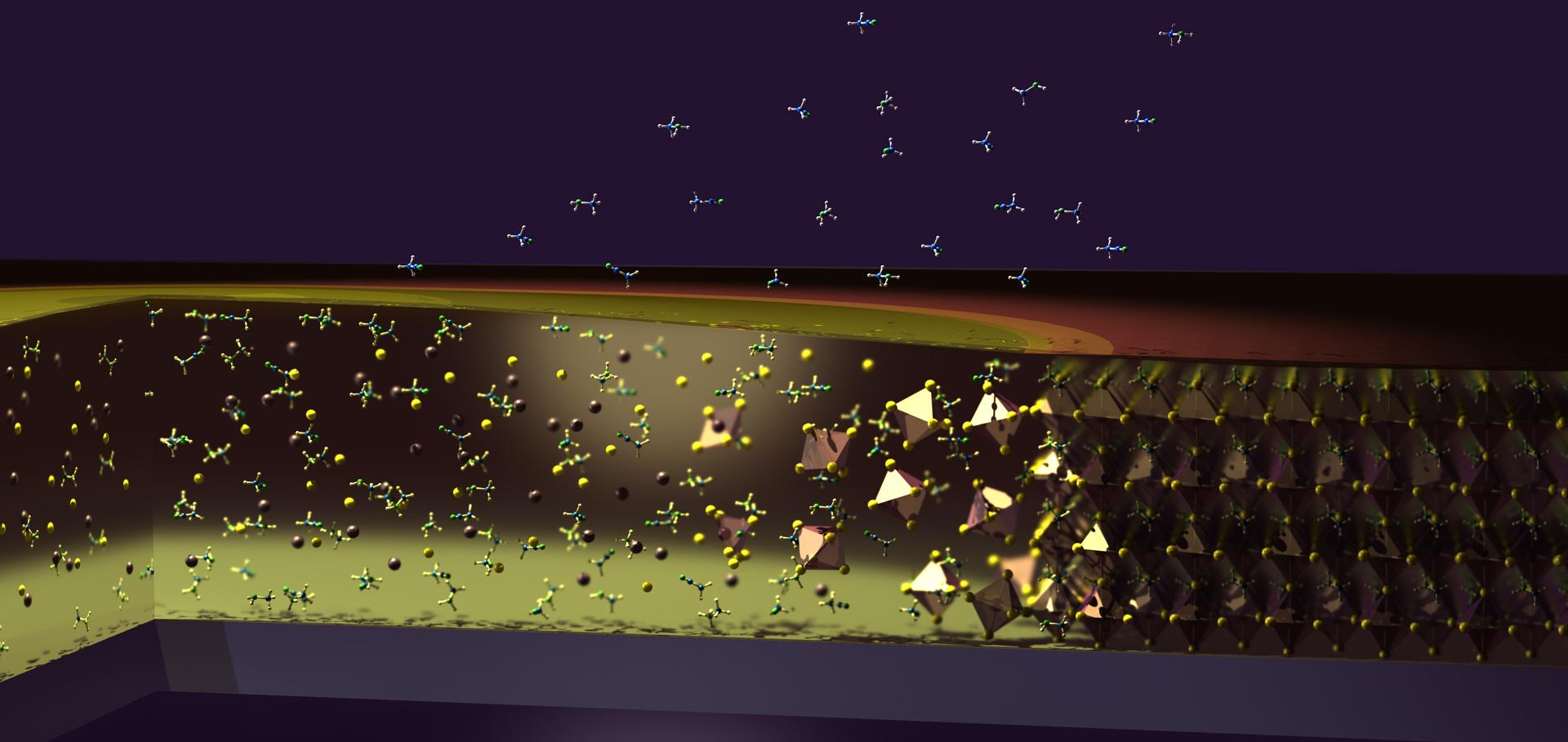Combining Spatial and Temporal Resolution in Cryo-TEM of Device Materials
Microscopy and Microanalysis Oxford University Press (OUP) 28:S1 (2022) 2162-2163
Improved charge balance in green perovskite light-emitting diodes with atomic layer-deposited Al2O3
ACS Applied Materials and Interfaces American Chemical Society 14:30 (2022) 34247-34252
Abstract:
Perovskite light-emitting diodes (LEDs) have experienced a rapid increase in efficiency over the last several years and are now regarded as promising low-cost devices for displays and communication systems. However, it is often challenging to employ ZnO, a well-studied electron transport material, in perovskite LEDs due to chemical instability at the ZnO/perovskite interface and charge injection imbalance caused by the relatively high conductivity of ZnO. In this work, we address these problems by depositing an ultrathin Al<sub>2</sub>O<sub>3</sub> interlayer at the ZnO/perovskite interface, allowing the fabrication of green-emitting perovskite LEDs with a maximum luminance of 21 815 cd/m<sup>2</sup>. Using atomic layer deposition, we can precisely control the Al<sub>2</sub>O<sub>3</sub> thickness and thus fine-tune the electron injection from ZnO, allowing us to enhance the efficiency and operational stability of our LEDs.Utilizing Nonpolar Organic Solvents for the Deposition of Metal-Halide Perovskite Films and the Realization of Organic Semiconductor/Perovskite Composite Photovoltaics
ACS Energy Letters American Chemical Society (ACS) (2022) 1246-1254
Role of Photon Recycling and Band Filling in Halide Perovskite Photoluminescence under Focussed Excitation Conditions
The Journal of Physical Chemistry C American Chemical Society (ACS) 125:4 (2021) 2240-2249
Diffusion and photon recycling in halide perovskite thin films: insights from experiment and theory
Proceedings of SPIE--the International Society for Optical Engineering SPIE, the international society for optics and photonics 11464 (2020) 114640j-114640j-6


